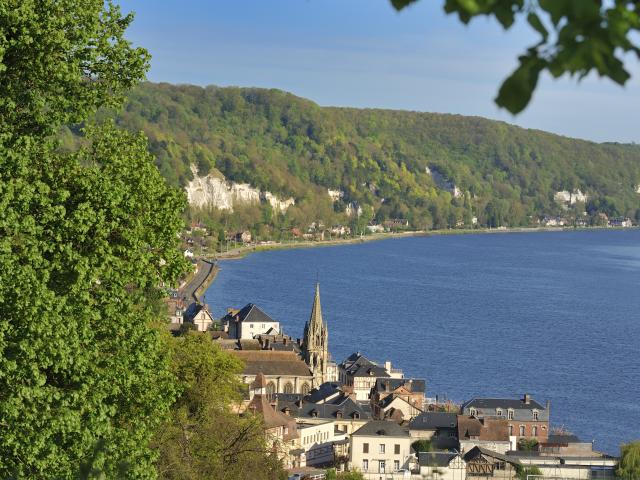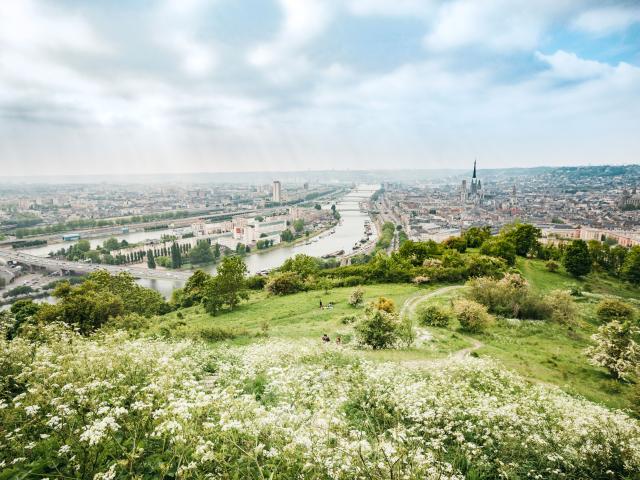 Panorama of Hénouville
Panorama of Hénouville La Bouille
La Bouille The Seine
The Seine Left bank and right bank quays of Rouen, view from the Gustave Flaubert bridge
Left bank and right bank quays of Rouen, view from the Gustave Flaubert bridge Panorama of Hénouville
Panorama of Hénouville La Bouille
La Bouille The Seine
The Seine Image Banner And In The Middle Flows The Seine
Image Banner And In The Middle Flows The SeineThis river is an integral part of the landscape of the Rouen metropolis. Dividing the capital of Normandy into two distinct banks, it is also the link between the many communes of our territory. From Le Trait to Sotteville sous le Val, the Seine reveals a multitude of faces that will delight lovers of boating and nature activities: towpaths, limestone cliffs, hiking trails …
La Bouille, Sahurs, Saint-Martin de Boscherville, Jumièges, Freneuse or Elbeuf will offer you magnificent landscapes, immortalized, for some, by great masters of impressionism.
The House of Hermès also paid tribute to Rouen, its river and its port by creating in 2003 the square “Rouen sur Mer“.
The recreational and industrial port activities present in Rouen and the Seine Valley illustrate the importance of this river for all the communes of the Rouen – Normandy Metropolis.
 Panorama of the Sainte-Catherine coast, Rouen
Panorama of the Sainte-Catherine coast, Rouen Rouen seen from the left bank quays
Rouen seen from the left bank quays